My last post in this series is about the return to a more efficient way of doing things.
 When I was on vacation in Mexico last christmas, I was using my 60D with the Hoodloupe a lot. I really liked having an electronic viewfinder. One of my clients bought the Panasonic AF100. He was used to the video camera form factor and did not like HDSLRs. I like HDSLRs because of the size and it is a great still camera too. The AF100 has good video monitoring with HDMI and HDSDI. The camera has XLR audio that can be monitored with headphones. There is a anti-ailising filter so the ailising and moire of DSLRs is gone because the camera is optimized for video. He bought the Lumix G Vario 7-14mm and the 14-140mm lenses. I bought adapters to use my Canon lenses and OM lenses. These adapted lenses are used more than the 14-140. The 7-14mm is excellent. But the files were still AVCHD with it problems mentioned earlier.
When I was on vacation in Mexico last christmas, I was using my 60D with the Hoodloupe a lot. I really liked having an electronic viewfinder. One of my clients bought the Panasonic AF100. He was used to the video camera form factor and did not like HDSLRs. I like HDSLRs because of the size and it is a great still camera too. The AF100 has good video monitoring with HDMI and HDSDI. The camera has XLR audio that can be monitored with headphones. There is a anti-ailising filter so the ailising and moire of DSLRs is gone because the camera is optimized for video. He bought the Lumix G Vario 7-14mm and the 14-140mm lenses. I bought adapters to use my Canon lenses and OM lenses. These adapted lenses are used more than the 14-140. The 7-14mm is excellent. But the files were still AVCHD with it problems mentioned earlier.
 At the end of last year Panasonic Lumix DMC-GH2 came out. I followed reports about it and it sounded like a much improved camera from the GH1. Because of supply problems it was in short supply and no dealers in my area carried it. For those people who got one, they were saying it had the best video in an HDSLR form. When I was at NAB I tried to see one but none were anywhere. Panasonic had their professional equipment at their booth. When I asked them about the GH2 they said, “That was being sold by the Consumer division.” Evidently the Broadcast division does not mingle with the Consumer division. (This is a good thing you will find out later.) i decided to order a GH2 so I could see one in person. I waited and waited and waited. It never showed up so I cancelled it.
At the end of last year Panasonic Lumix DMC-GH2 came out. I followed reports about it and it sounded like a much improved camera from the GH1. Because of supply problems it was in short supply and no dealers in my area carried it. For those people who got one, they were saying it had the best video in an HDSLR form. When I was at NAB I tried to see one but none were anywhere. Panasonic had their professional equipment at their booth. When I asked them about the GH2 they said, “That was being sold by the Consumer division.” Evidently the Broadcast division does not mingle with the Consumer division. (This is a good thing you will find out later.) i decided to order a GH2 so I could see one in person. I waited and waited and waited. It never showed up so I cancelled it.
This November, Kenmore Camera had a camera show in Lynwood Washington, not far from me. All the manufacture reps were there from Nikon, Canon, Sony, Pentax, etc. Also Panasonic. That's right Panasonic and he had the GH2. Finally I had my hands on a GH2. It was small. Much smaller than my Canon. The lenses were smaller and lighter than the any of my Canon's. I tired the new Lumix G Vario 100-300mm F4-5.6 O.I.S. That's right with image stabilization. Also the wonderful new Lumix Leica DG Summilux 25mm F1.4. That's right, some of the best glass in the world, Leica. This is a professional superb large aperture fixed focal length lens. They also have a tiny wide angle pancake lens, the Lumix G 14mm F2.5. I was impressed with the camera and the lenses but I did not buy it.
But I could not get it out of my head so I ordered one with no lenses. I also found a great deal on a Lumix G Vario 14-140mm so I order that too. They both arrived this time. Also I picked up the new Olympus M. Zuiko Digital ED 45mm f/1.8 recently. I have not been able to use my Canon since then. Hello eBay.
 I like the electronic viewfinder. A lot of the time when using the GH2 as a still camera, I don't even open the LCD because I see the playback image right away in the finder. I can play movies there as well. The viewfinder is very high resolution and can bee seen in daylight as well as in darkness. The viewfinder diopter works with my glasses but I am barley able to see the whole screen. I wish the rear lens of the viewfinder was bigger. I like that I am able to see audio levels and a histogram in the finder. All the necessary information is there. There are 4 levels of audio control. I have tested it with both lavaliere and a shotgun mic and it does not pump the auto gain more like a mild limiter which is OK.
I like the electronic viewfinder. A lot of the time when using the GH2 as a still camera, I don't even open the LCD because I see the playback image right away in the finder. I can play movies there as well. The viewfinder is very high resolution and can bee seen in daylight as well as in darkness. The viewfinder diopter works with my glasses but I am barley able to see the whole screen. I wish the rear lens of the viewfinder was bigger. I like that I am able to see audio levels and a histogram in the finder. All the necessary information is there. There are 4 levels of audio control. I have tested it with both lavaliere and a shotgun mic and it does not pump the auto gain more like a mild limiter which is OK.
The GH2 still shoots with the AVCHD codec but Panasonic has given us a AVC Importer plug-in for Quicktime so I can now see my files in QTPlayer or the finder. Also it is a lot easier to convey the files to ProRes for editing in Final Cut 7. The GH2 now shoot 24p and now 30p @ 24mps in 1080 HD with the new firmware update. I am stoked to have 30p. It is a lot better for the web and TV than 24p. Also my clients like it better. Also there is a AVCHD 720p 60 mode as well. I have already used that for slow motion on a shoot.
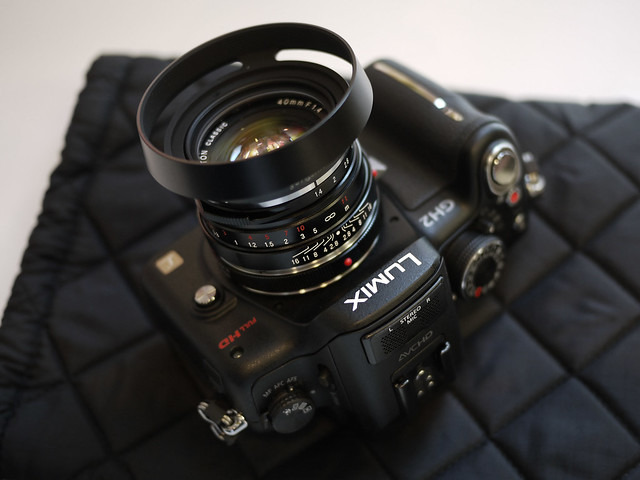 Because the Micro Four Thirds camera don't have a mirror behind the lens many different lenses can be used. I have an Olympus OM mount, a Canon EF mount and I have ordered a Leica M mount for their rangefinder lenses. They are very small lenses and there are some good buys on used non Leica brands. Rumor has it that Panasonic is working on a more professional large aperture zoom. We will see.
Because the Micro Four Thirds camera don't have a mirror behind the lens many different lenses can be used. I have an Olympus OM mount, a Canon EF mount and I have ordered a Leica M mount for their rangefinder lenses. They are very small lenses and there are some good buys on used non Leica brands. Rumor has it that Panasonic is working on a more professional large aperture zoom. We will see.
Right now I am not using any HDSLR rigs on my GH2 as it seems just fine to hold it up to my eye. We will still evaluate rig for their usefulness. I have just shed a lot of pounds off my camera backpack.









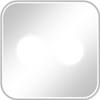
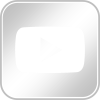

 I had just bought the JVC HM100 tapeless video camera to replace my Sony V1, but my clients wanted the HDSLR look. With the Redrock the image was soft and hard to get because of all the adjustments. It was a beast and it did not like being handheld. Then came the HDSLR. The Canon 5D markII came out which shot 1080p video and some my associates were buying Canon. I realized that I was behind and that I needed to catch up.
I had just bought the JVC HM100 tapeless video camera to replace my Sony V1, but my clients wanted the HDSLR look. With the Redrock the image was soft and hard to get because of all the adjustments. It was a beast and it did not like being handheld. Then came the HDSLR. The Canon 5D markII came out which shot 1080p video and some my associates were buying Canon. I realized that I was behind and that I needed to catch up.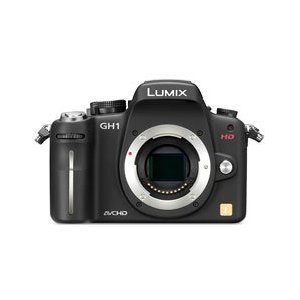 I was interested in the
I was interested in the  After seeing what Canon HDSLR's could do, I sold my Olympus E-System and bought the Canon 7D. The 7D is a mixed blessing. A 35mm motion picture sized sensor instead of 35mm still sized sensor on the 5D. The Canon shot h264 video in Quicktime and could be viewed easily in the finder. There is 1080p at 24 and 30 fps. 720p at 60 fps. All modes are not interlaced and at broadcast friendly frame rates. They are progressive. Great looking video in a small package but only in certain circumstances.
After seeing what Canon HDSLR's could do, I sold my Olympus E-System and bought the Canon 7D. The 7D is a mixed blessing. A 35mm motion picture sized sensor instead of 35mm still sized sensor on the 5D. The Canon shot h264 video in Quicktime and could be viewed easily in the finder. There is 1080p at 24 and 30 fps. 720p at 60 fps. All modes are not interlaced and at broadcast friendly frame rates. They are progressive. Great looking video in a small package but only in certain circumstances.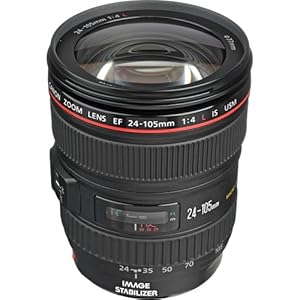 There is moiré and ailising because Canon line skips the CMOS chip because it has much resolution that HD video. There is Rolling Shutter which makes the video look like jello. So I also bought the better “L-Glass” for my Canon because I could afford it now because it was for my video camera. In fact I bought the
There is moiré and ailising because Canon line skips the CMOS chip because it has much resolution that HD video. There is Rolling Shutter which makes the video look like jello. So I also bought the better “L-Glass” for my Canon because I could afford it now because it was for my video camera. In fact I bought the  Then there is audio. There is no headphone jack. The 7D had a pumping auto gain on the audio that could not be overdid, which is not good. The internal mic was mono. Most people used double system audio with a separate audio recorder. This does not fit into my book of simple and small. I found the
Then there is audio. There is no headphone jack. The 7D had a pumping auto gain on the audio that could not be overdid, which is not good. The internal mic was mono. Most people used double system audio with a separate audio recorder. This does not fit into my book of simple and small. I found the  Through out all this time I still had my film Nikon F3‘s even though a lot of others had moved on to autofocus cameras. I shot slides instead of prints and loved my beloved Kodachrome. I loved my Nikons and had used them for over 30 years. As you can see I used the “professional big boys of the business, Sony, Nikon” when it was the best for me. They might had not been the most cost efficient but did turn out to be frugal because of the way I used them.
Through out all this time I still had my film Nikon F3‘s even though a lot of others had moved on to autofocus cameras. I shot slides instead of prints and loved my beloved Kodachrome. I loved my Nikons and had used them for over 30 years. As you can see I used the “professional big boys of the business, Sony, Nikon” when it was the best for me. They might had not been the most cost efficient but did turn out to be frugal because of the way I used them. In 2001 I sold my beloved Nikons for this new thing called a digital still camera. I had already converted to digital with video and was taking stills from my VX1000 video camera. I bought a Sony F707 consumer camera with built in lens instead of a SLR because they were still $3,000. It had a low resolution electronic viewfinder. I really liked the smallness of the camera and instant feedback that digital gave me.
In 2001 I sold my beloved Nikons for this new thing called a digital still camera. I had already converted to digital with video and was taking stills from my VX1000 video camera. I bought a Sony F707 consumer camera with built in lens instead of a SLR because they were still $3,000. It had a low resolution electronic viewfinder. I really liked the smallness of the camera and instant feedback that digital gave me. When the Canon Digital Rebel came out, I got a DSLR. At the time I could not afford “L-Glass”, so I had consumer lenses because still photography was secondary to video. A few years later when going on a vacation trip I need a second still camera so I bought at Costco an Olympus E300. I was immediately impressed with the quality of the lenses and the camera. The jpegs out of the camera looked the best in terms of color quality compared to using any other camera. I was used to shooting slides so I like shooting jpeg and mostly do. I also had an Olympus E1 and then an Olympus E3 and was very happy. I truly loved the swivel LCD on the E3.
When the Canon Digital Rebel came out, I got a DSLR. At the time I could not afford “L-Glass”, so I had consumer lenses because still photography was secondary to video. A few years later when going on a vacation trip I need a second still camera so I bought at Costco an Olympus E300. I was immediately impressed with the quality of the lenses and the camera. The jpegs out of the camera looked the best in terms of color quality compared to using any other camera. I was used to shooting slides so I like shooting jpeg and mostly do. I also had an Olympus E1 and then an Olympus E3 and was very happy. I truly loved the swivel LCD on the E3. I have never wanted to be “Trendy” in the video business. Even at college I pushed the primitive equipment to the max. At a TV station I modified stuff to work better for me and I used a consumer camera with a 3/4 inch video deck with out telling the engineers. It passed broadcast. I put a 400mm Nikkor on my JVC KY-2000 so I could record President Reagan getting out of his helicopter at his ranch in Santa Barbara 6 months before the national networks did it. After working for the TV station, I moved to Los Angeles to freelance. In the Los Angeles area we never got permits to shoot. We like to be stealth and work without a large crew. I did Pete Ellis Dodge spot with me and the director. (One of them made it into a tv inthe movie “Into The Night.” Occasionally we rent sound stages for bigger shoots but still a small crew. I was one of the first to do a “making of” documentary on a feature film as a one man band with a JVC KY1900 and a 3/4 inch portable video deck. I have always looked at way to “do it better.”
I have never wanted to be “Trendy” in the video business. Even at college I pushed the primitive equipment to the max. At a TV station I modified stuff to work better for me and I used a consumer camera with a 3/4 inch video deck with out telling the engineers. It passed broadcast. I put a 400mm Nikkor on my JVC KY-2000 so I could record President Reagan getting out of his helicopter at his ranch in Santa Barbara 6 months before the national networks did it. After working for the TV station, I moved to Los Angeles to freelance. In the Los Angeles area we never got permits to shoot. We like to be stealth and work without a large crew. I did Pete Ellis Dodge spot with me and the director. (One of them made it into a tv inthe movie “Into The Night.” Occasionally we rent sound stages for bigger shoots but still a small crew. I was one of the first to do a “making of” documentary on a feature film as a one man band with a JVC KY1900 and a 3/4 inch portable video deck. I have always looked at way to “do it better.” After I moved to the Pacific Northwest, I was one of the first in the area to purchase a Sony Betacam camera because it was one of the first “camcorders” because I did not have to rely on a separate video recording deck. I had adopted the camcorder before the local TV stations had used them. Once I rented a Schwen Gyro-Zoom for my Betacam so I could shoot from a helicopter because it was one of the first lenses with optical image stabilization (O.I.S.). When Sony put O.I.S. in their TR-100 Hi8, I also used Hi8 professionally because the cameras were so small. OIS made a small camera hand holdable.
After I moved to the Pacific Northwest, I was one of the first in the area to purchase a Sony Betacam camera because it was one of the first “camcorders” because I did not have to rely on a separate video recording deck. I had adopted the camcorder before the local TV stations had used them. Once I rented a Schwen Gyro-Zoom for my Betacam so I could shoot from a helicopter because it was one of the first lenses with optical image stabilization (O.I.S.). When Sony put O.I.S. in their TR-100 Hi8, I also used Hi8 professionally because the cameras were so small. OIS made a small camera hand holdable. Then the Sony DCR-VX1000 MiniDV camcorder came out and I was in “Nirvana.” Immediately I bought one because it offered what I had always wanted. A very high quality camera in a small lightweight package. It offered 3 chip component video in an optical image stabilized camera that weighed 3 vs 30 pounds. It cost $4,000 vs $30,000. Like “Duh.” This made a lot of sense. The camera was immediately back ordered for 9 months so my camera had a lot of use because it was rented. I kept that camera for 10 years.
Then the Sony DCR-VX1000 MiniDV camcorder came out and I was in “Nirvana.” Immediately I bought one because it offered what I had always wanted. A very high quality camera in a small lightweight package. It offered 3 chip component video in an optical image stabilized camera that weighed 3 vs 30 pounds. It cost $4,000 vs $30,000. Like “Duh.” This made a lot of sense. The camera was immediately back ordered for 9 months so my camera had a lot of use because it was rented. I kept that camera for 10 years.
 Now that I have a
Now that I have a 
